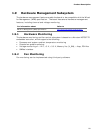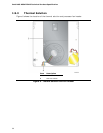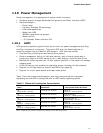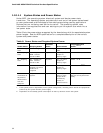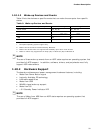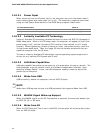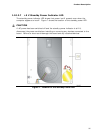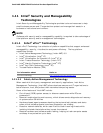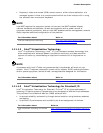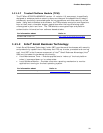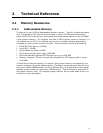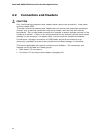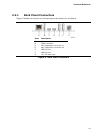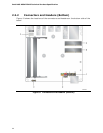
Product Description
37
• Keyboard, video and mouse (KVM) remote control, which allows redirection of a
managed system’s video to a remote console which can then interact with it using
the console’s own mouse and keyboard
NOTE
Intel AMT requires the computer system to have an Intel AMT-enabled chipset,
network hardware and software, as well as connection with a power source, a
corporate network connection, and an Intel AMT-enabled remote management console.
Setup requires additional configuration of the platform.
For information about Refer to
Intel Active Management Technology http://www.intel.com/technology/platform-
technology/intel-amt/index.htm
1.11.1.2 Intel
®
Virtualization Technology
Intel
®
Virtualization Technology (Intel
®
VT) is a hardware-assisted technology that,
when combined with software-based virtualization solutions, provides maximum
system utilization by consolidating multiple environments into a single server or
client.
NOTE
A processor with Intel VT does not guarantee that virtualization will work on your
system. Intel VT requires a computer system with a chipset, BIOS, enabling software
and/or operating system, device drivers, and applications designed for this feature.
For information about Refer to
Intel Virtualization Technology http://www.intel.com/technology/virtualization/tec
hnology.htm
1.11.1.3 Intel
®
Virtualization Technology for Directed I/O
Intel
®
Virtualization Technology for Directed I/O (Intel
®
VT-d) allows addresses in
incoming I/O device memory transactions to be remapped to different host addresses.
This provides Virtual Machine Monitor (VMM) software with:
• Improved reliability and security through device isolation using hardware assisted
remapping.
• Improved I/O performance and availability by direct assignment of devices.
For information about Refer to
Intel Virtualization Technology for Directed
I/O
http://www.intel.com/technology/itj/2006/v10i3/2-io/4-
virtualization-techniques.htm



